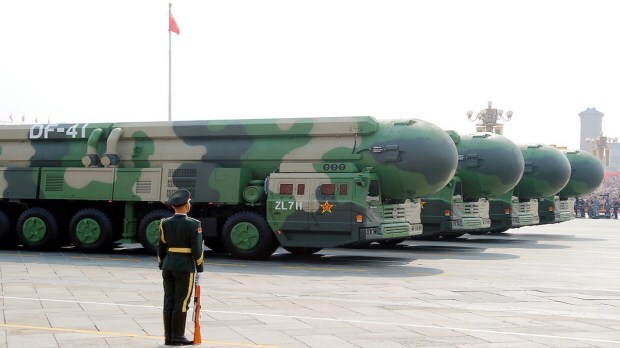The Agni- V ballistic missile made India the fourth country after Russia, the United States and China to have both land and sea-based Inter-Continental Ballistic Missiles (ICBMs).
The Agni-V completes the concept of a Nuclear Triad. India’s nuclear forces include air-delivered free-fall weapons, land-based ballistic missiles, and a nuclear attack submarine (SSBN) capability. The potent arsenal in the triad is the submarine-launched K-4 missiles, leading into the Strategic Forces Command that takes care of India’s strategic assets.
Primarily, the Agni 5 project was launched for India’s nuclear deterrence against China. The work on the Agni-V intercontinental ballistic missile project was started over a decade ago and the missile was tested seven times before.
India’s countermeasure is driven by China’s growing nuclear capability which was highlighted by then-Chief of Defence Staff, General Bipin Rawat. He called China the biggest security threat.
Last year, India successfully test-fired the surface-to-surface strategic missile Agni-5 which can strike targets up to a range of 5,000 km. The key factor is the range. However, according to military experts, the range could go up to 5,500 Km.
Interestingly, Despite, the sufficient range, the Defence Research and Development Organization (DRDO) defines Agni-V as an intermediate-range ballistic missile (IRBM), rather than as an ICBM– intercontinental ballistic missile (ICBM).
With such capacity, the Agni-V can reach the northernmost parts of China with its strike range of over 5,000 km. With such range, the missile can hit any town in China, including its two largest cities—Beijing and Shanghai.
On the other side, China has developed the ICBM with a similar range or beyond. Among its arsenal, the DF-41 has the highest range. How capable is DF-41 in comparison with Agni- V?
China’s ICBM–DF-41
China has been developing the Dongfeng range of missiles–DF missile. The DF missiles are a series of ballistic missiles with the capability to engage targets at short, medium, intermediate, and intercontinental ranges. In the series, China’s DF-41 stands out in terms of its range and capabilities.

The first test launch of DF-41 took place in 2013 and the second followed in 2014.
Like the Agni-V, the Chinese DF-41 is also loaded with a solid-fuel missile, providing accuracy over the long trajectory- target. It has an estimated range of 12 000 km and carries up to 10 Multiple Independently-targetable Re-entry Vehicles (MIRVs). While still in the testing phase, it is expected that the Dong Feng aims to surpass the speed of Mach 25.
The missile can carry multiple warheads, including up to ten nuclear warheads, with a total payload of 2,500kg. In comparison, the Agni-V missile can carry approximately 1500 kg in the payload and it can reach an exceptional Mach 24 speed which is 29,401 km/h.
With a range of 12,000 km, China can strike anywhere in India. In fact, China has a parallel development plan in the continental range which includes DF-31AG, DF-17 and DF-31AG.
However, in terms of fully operational capabilities, the Dong Feng 5 remains the longest-range missile in China with a range of 13,000 km. It can strike the United States and Western Europe.

